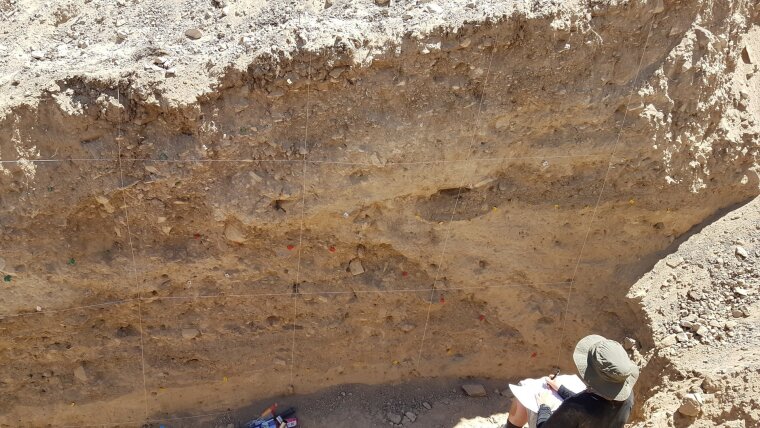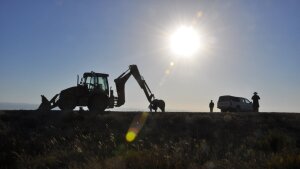
Published:
If you have an excavator, you don't need to dig a paleoseismological trench by hand.
Image: Christoph GrütznerIn a new review article, we look at the latest developments in the field of terrestrial paleoseismology. This method is used to trace past strong earthquakes by excavating and and dating deformed sediments. This is used to find out when strong earthquakes left their mark and how strong these events were. In recent years, numerous new methods have found their way into this branch of earthquake geology. These include new geodetic techniques that allow recent earthquakes to be studied in detail, allowing better comparison with prehistoric events. New geophysical techniques are providing ever better insights into the subsurface, and new and improved dating methods help to precisely constrain the timing of seismic events. Digital mapping methods and 3D models have also become standard procedures.
Reference:
McCalpin, J., Ferrario, F., Figueiredo, P., Livio, F., Grützner, C., Pisarska-Jamroży, M., Quigley, M., Reicherter, K., Rockwell, T., Štěpančíková, P., & Tábořík, P. (2023). New developments in onshore paleoseismic methods, and their impact on Quaternary tectonic studiesExternal link. Quaternary International.
